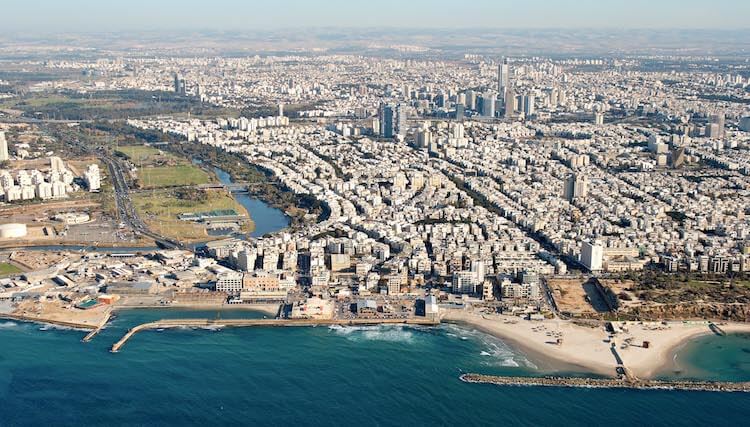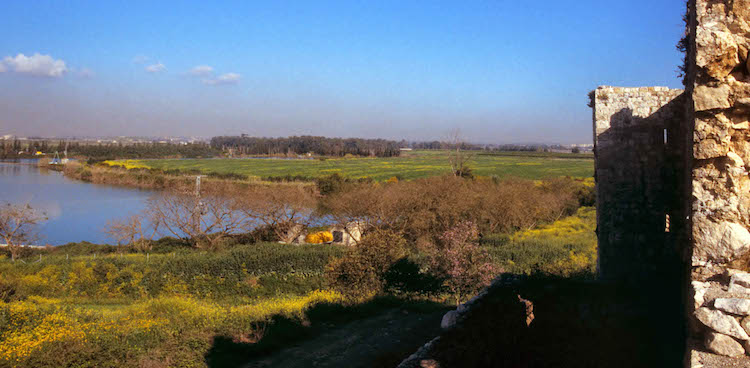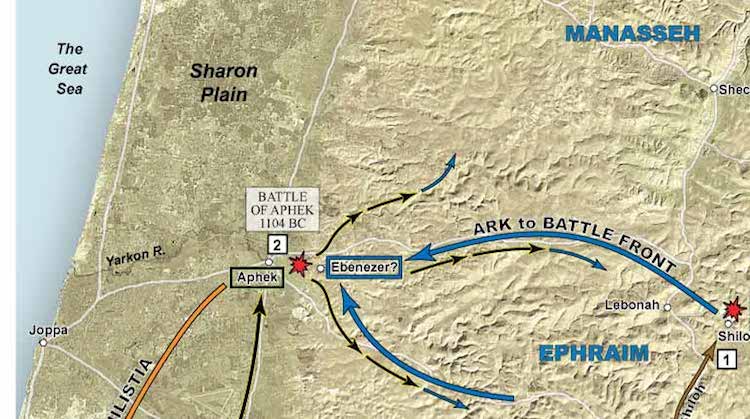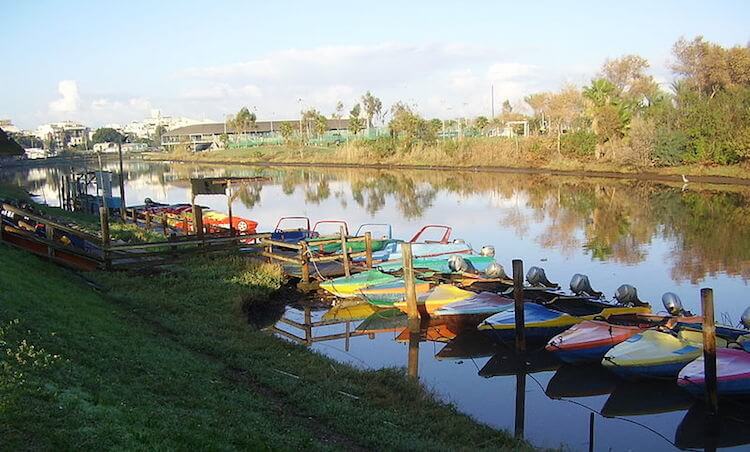The headwaters of Israel’s Yarkon River form near ancient Tel Aphek (Antipatris) and flow westward until they surrender to the Mediterranean Sea at Tel Aviv.

(Photo: Tel Aviv and the Yarkon River. Courtesy of the Pictorial Library of Bible Lands)
Modern travelers who make their way along Israel’s coastal highway cross a bridge that carries them over the Yarkon River. But it wasn’t so in antiquity.
In biblical days, the Yarkon River was simply in the way. It forced a detour that gave strategic value to one site.
Significant biblical events occurred there that today most visitors miss.
Tel Aphek (Antipatris)
For millennia the Yarkon River funneled all traffic on the ancient International Highway eastward and inland. Tel Aphek sat waiting for them.

(Photo: Tel Aphek’s view of the headwaters of Yarkon River. Courtesy of the Pictorial Library of Bible Lands)
Aphek guarded all traffic north and south, giving the city a commanding position for centuries. Biblical history at Aphek includes:
- The battle in which Israel lost the Ark (1 Samuel 4:1, 11). Here the Philistines made their camp from which they fought Israel at the battle of Aphek in 1104 BC.
- The place where the Philistines refused to allow David to join their ranks (1 Samuel 29:1-3).
- The Roman way station where the Apostle Paul stayed during his hurried transport to Caesarea (Acts 23:31). It served as a convenient halfway point between the Roman capital of Israel and Jerusalem.

(Map courtesy of Satellite Bible Atlas)
A number of significant finds have been unearthed at Tel Aphek/Antipatris:
- Archaeologists have discovered Egyptian ruins from the Late Bronze Age.
- An ancient Cardo was found that dates to the time when Herod the Great renamed the site Antipatris, in honor of his father Antipater.
- During the first Jewish Revolt, the Jews built a fort here, over which the Crusaders later erected a castle.
- The extensive remains visitors see today date primarily from the Turkish period and the Ottoman ruler Suleiman the Magnificent.
The Yarkon Park (Ganei Yehoshua)
Where battles and soldiers once raged and roamed, today the Yarkon River Park provides hundreds of acres that follow alongside the river and offer tranquility and activity for Tel Aviv visitors.
- The eastern section of the park includes a ten-acre rock garden with interpretive signs that explain the rock formations as one walks the trails among 3500 species of plants.
- The park also offers a tropical garden, cycling, paddleboats, a bird sanctuary, and a petting zoo.

(Photo: Boats to rent on the Yarkon River. By צילום:ד”ר אבישי טייכר CC-BY-2.5, via Wikimedia Commons)
Crossing the Yarkon River is easy today, thanks to a bridge that shortcuts where the ancients traveled. But that bridge bypasses significant history that occurred inland.
Sometimes it’s beneficial—and beautiful—to take the long way.
Tell me what you think: If you ever crossed the Yarkon River, did you notice it? To leave a comment, just click here.
You’ll find these sites and more in a book I wrote for the Israel Ministry of Tourism, 100 Off-The-Beaten-Path Sites. You can download a free copy.
